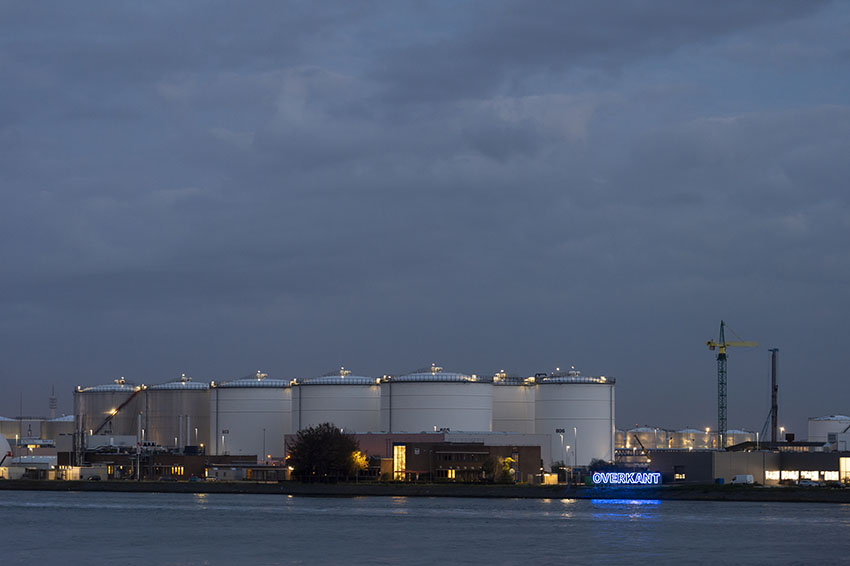Looking Ahead
On the table is the Volkskrant which contains an extensive interview with Job Hof. He recently turned 100, and because the Volkskrant is also celebrating 100 years, the newspaper interviews people of the same age. In the article she is briefly mentioned, artist Dike Hof, the journalist describes how her father shows one of her sculptures and that he says he is grateful she is still around. In 1994, Dike Hof was told she didn't have long left, which gave her life unintentionally gave direction to her life. As Dike Hof's life unfolded, so did this conversation. It chose its own direction.

In the period after her diagnosis, making art took on a different meaning for Hof; only during her illness did her artistry mature. She began her working life as a teacher of Visual Education in Secondary Education in Vlaardingen. She did that in addition to studying in Amersfoort. A lot of traveling, long days. After graduation she continued to work full time for the first few years. After a while, she began to dislike that less and less and opted for a four-day week so that ONEwas a day when she could make free work. That was the plan, but things turned out differently.
That moment proved to be the beginning of a multifaceted artistic practice
In 1994, she was told she had an incurable form of cancer and that she had to expect to die soon. She was declared disabled and said goodbye to her beloved job and school. She ended up at the Helen Dowling Institute for psychological care, because such a bad diagnosis turns life upside down. After she made a small sculpture out of wax at home and then brought it to the group, one of the counselors said "If you have that cast in bronze, I'll buy it from you right away." That moment proved to be the beginning of a multifaceted artistic practice that continues to this day.
Both small sculptures and large works in public spaces, commissioned and self-initiated
Dike Hof's artistry formed slowly and over the years. After all, looking far ahead was and is not possible in her situation. That she has now reached retirement age tells her nothing. "Art gives substance to my life." By being busy with her work, she does not feel like a patiënt, but she emphasizes that making art does not serve therapeutic purposes; she is really about the making itself. As we look back together at the last 25 à 30 years of her artistry reveals an impressive body of work of both small sculptures and large works in public spaces, commissioned and on her own initiative.

Her first commission was in 2001, Rotterdam was European Capital of Culture that year and the region was also participating. Hof was invited by a Vlaardingen foundation to make a temporary work for public space and her contribution stood out; she covered a large pusher boat in the Wilhelmina harbor with a thousand meters of red fabric. She then filled the boat with scrap metal. From the installation sounded Constructions in metal By John Cage.
More commissions followed after the pusher; she made a neon work for the Stiltecentrum in the Vlietland hospital in Schiedam and an artwork of neon combined with bronze sculptures for Vlaardingen's Stadsgehoorzaal. Perhaps the most special commission came from the team at the Hematology Department of what is now Erasmus MC, where she has been treated since 1994. They asked her to create a sculpture for researchers doing internationally pioneering work in the field of hematology. Every two years now a scientist receives this bronze sculpture and a sum of money. She has since received thank-you gifts from several professors at universities around the world.
Perhaps the most extraordinary assignment came from the team at the Hematology Department of what is now Erasmus MC
When not working on commission, she commissions herself. She conceived four neon works for four image-defining buildings in Vlaardingen, submitted the plan to the municipality, applied for subsidies and permits, and now the work has been prominent in Vlaardingen's outdoor space for many years. This series was supplemented three years ago with a fifth neon work, also an own initiative. In Vlaardingen, the other side of the Nieuwe Waterweg is historically significant. Residents worked on the other side, among others at Shell. Now in deep blue neon letters the word across on the other side of the water, during the day you hardly see it but as soon as dusk falls it lights up.
This series was completed three years ago with a fifth neon work, also an own initiative
Last fall, Hof broke her back in a fall. At the time, she was working on a sketch design for an area of Vlaardingen that will undergo a major transformation in the coming years. Her back has to recover and doctors say that could take at least a year, in addition to which she is in a lot of pain. She has only been working again on the sketch design and feasibility study since a few weeks. She doesn't want to say much about it yet because a lot is still unclear. After all, she knows better than anyone else, nothing is certain in life and you should never look too far ahead.


